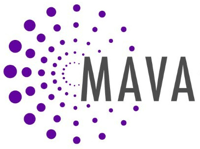This article originally appeared on www.mavanetwork.org and is featured here in partnership with the Minnesota Alliance for Volunteer Advancement.
![]()
By Lisa Joyslin, Minnesota Alliance for Volunteer Advancement
In the aftermath of George Floyd’s murder, followed by protests and riots across the nation calling for racial justice, many people are experiencing discomfort. Discomfort at the unfairness and injustice experienced in the Black community. Discomfort in our own actions, or lack thereof. Discomfort regarding how to move forward.
Discomfort is a vital part of growth and change. Systems and structures across the nation – from law enforcement to education and everything in between – need to change. They need to be centered around equity.
But for nonprofit leaders and, in particular, volunteer engagement leaders, discomfort should not be something we only feel about other systems.
Volunteerism needs to change, too. Small tweaks to our already-existing structures are not enough. Big, overarching change is needed. Why? Because volunteerism is built on systemic racism.
That’s not comfortable. But it’s true.
How do we know that systemic racism is embedded in volunteerism? Because modern volunteerism – the formal structures and processes by which most organizations engage volunteers – is built upon multiple characteristics of white supremacy culture.
Consider the following characteristics, originally developed by Kenneth Jones and Tema Okun in 2001 and outlined by Okun in her essay white supremacy culture, and how they are embedded in volunteer engagement:
Sense of urgency
Okun describes this characteristic as a “continued sense of urgency that makes it difficult to be inclusive,” and a practice that “frequently results in sacrificing potential allies for quick or highly visible results.”
How it shows up in volunteerism:
- Acting upon demands of organizational leaders or program directors who need “more volunteers now,” forcing quick recruitment instead of thoughtful outreach
- Recruitment goals that call for an increase of volunteers over a course of months or one year when building authentic relationships with new communities takes much longer than that
Defensiveness
This characteristic appears when “the organizational structure is set up and much energy spent trying to prevent abuse and protect power as it exists rather than to facilitate the best out of each person.”
How it shows up in volunteerism:
- Strict risk management practices centered on protecting the organization and its power/reputation, not on bringing out the best in each individual. Examples include rigid background check rules, requiring multiple references, paperwork not easily completed by a non-native English speaker, etc.
Worship of the Written Word
Okun describes this characteristic as “if it’s not in a memo, it doesn’t exist,” and “the organization does not take into account or value other ways in which information is shared.”
How it shows up in volunteerism:
- Insisting on a written application as the first step to volunteering
- Heavy reliance on written rules and regulations, as outlined in volunteer handbooks, policies, performance reviews, etc.
- Expecting written memorandums of understanding to define partnerships

Like this article?
Get more like it, plus access to exclusive reports, training, and networking events by joining MAVA's network of Volunteer Engagement Professionals.
Quantity over quality
This characteristic appears when “all resources of an organization are directed toward producing measurable goals,” and “little or no value is attached to process.”
How it shows up in volunteerism:
- Individual and department goals are centered on measurable outcomes such as volunteer recruitment, retention and evaluation
- Volunteers who “don’t work out” are seen as a waste of time instead of a learning opportunity for both the volunteer and the organization
- Building new relationships and growing trust are not recognized as successful until volunteer numbers increase
Only one right way
Okun describes this characteristic as “the belief there is one right way to do things and once people are introduced to the right way, they will see the light and adopt it.”
How it shows up in volunteerism:
- The volunteer engagement field is filled with “best practices” that are held up as the one right way to do volunteerism
- Most programs have one pathway to becoming a volunteer (perhaps with an abbreviated pathway for episodic volunteers that eliminates a few steps)
Paternalism
This characteristic is described as, “those with power think they are capable of making decisions for and in the interest of those without power.”
How it shows up in volunteerism:
- Nonprofit and volunteer engagement leaders make decisions about the volunteer program without consulting community members and those who receive services from the organization
- Those with money are provided special treatment as volunteers; i.e. creating a customized volunteer opportunity for a funder’s employee group. For more examples see Sue Carter Kahl’s recent blog post Power, Privilege, and Volunteerism
- Prioritizing the feelings or reactions of donors instead of the community when making decisions about programming, volunteer services and messaging.
Any given volunteer program may not be guilty of all the white supremacy culture characteristics listed above. But chances are good that you recognize at least a few that are prevalent in your organization and those you work with. (And if your organization does not take part in any of the actions listed above, please reach out to MAVA as we would love to learn from you.)
It has been said about other systems in our society, but it’s also true here: Volunteerism is not broken. It is working exactly the way it was designed. It works well for those with privilege. It pushes away those without.
So, what can we do about it?
Start with the idea that there is only one right way to do things. Throw it out the window. In Vu Le’s recent blog post on Nonprofit AF, he discusses how lack of imagination is a barrier to equity and justice in the nonprofit sector. You can’t imagine new possibilities if you believe you’ve found the one right way. And when it comes to volunteerism, there are so many ways.
Consider, for example:
- Neighbors helping neighbors within a community. People don’t often call this volunteerism, but it has the same spirit of care and compassion.
- Protestors. Those going to a protest probably didn’t say they were heading out to “volunteer.” Yet, they gave of their time for a cause they were passionate about.
- Community organizing. Again, grassroots efforts aren’t often labeled as “volunteerism.” They are simply people coming together to make things better.
There are far more people of color engaged in the three activities above than there are in formal volunteerism with a nonprofit organization. Communities of color are volunteering. Communities experiencing poverty are volunteering. Immigrant communities are volunteering. They’re just not doing it with formal programs.
And the reason why should be pretty clear by the characteristics listed above. Formal volunteerism has built up countless barriers to keep people of color away.
So let’s learn from these other ways of supporting communities. Let’s learn from the people of color who are giving of themselves every day to make this world better. Let’s have hard conversations and more importantly, let’s take action that we never thought possible.
Action is going to look different for each organization and each community. No right way means more work. But it’s the only way volunteerism has a chance of becoming equitable. And if volunteerism – a field that prides itself on helping others and making the world better – isn’t about equity…then, honestly, THAT should be the source of our discomfort.
*The Minnesota Alliance for Volunteer Advancement (MAVA) connects, educates, strengthens and advocates for volunteer engagement leaders and their organizations to positively impact communities. Learn more about MAVA and our Inclusive Volunteerism Program here.





